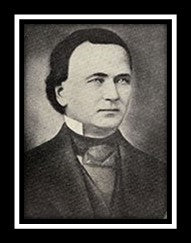The Invention: From Pins to Magnets

In 1849, Walter Hunt literally secured (or better said, pinned) a place in American history when he invented the useful, everyday device known as the safety pin. The story about this invention is infamous.
Inventor’s Motivation
Hunt owed J.R. Chapin a $15 debt for drafting services he performed for Hunt on previous inventions. Hunt had no idea how he was going to pay it, but Chapin was pressuring him to pay it now.
Hunt decided that he would invent something new and sell the invention and use the proceeds to pay Chapin. He began working feverishly on a brand-new invention and started experimenting with a spool of high-tension wire for a few hours a day. And then like a pin popping a balloon, it dawned on him.
Inventor’s Solution
All his twisting and turning paid off, he had created a device he called the “dress pin,” with a spring at one end that forced the other end into place—into a clasp that kept the pin’s pointed part inside a protective case or clasp that held the pin in place even if the device was moved around. However, Hunt’s invention was not entirely new. The ancient Romans used something similar in jewelry and brooches, just without the wound-up spring.

As typical of inventors, Hunt patented his device (U.S. Patent No. 6,281) but sold the patent rights for a mere $400 dollars, which was a lot in that time, but not nearly representative of the value of the invention. He may have earned enough money to pay of Chapin, but he lost out on the multi-millions that would be earned through the mass manufacturing and commercialization of what has become known as the safety pin.
The safety pin has hundreds if not thousands of uses, including fastening diapers and clothing such as trousers, shirts, and jackets, shawls, scarfs, and even as a component of jewelry. The safety pin is a device that is relatively cheap to make and even today is found in practically every household.
Jump forward 163 years to year 2012 and in the spirit of Walter Hunt, another inventor (Margaret Sinclair, aka “Maggie”) became busy creating a better way to fasten things.

Inventor’s Motivation
Maggie discovered that there was not a single product available to fasten a beautiful sarong. The only items available were safety pins which were not an option on fine silks, leaving the sarong wearer no easy option other than tying bulky, unflattering knots.

All other options available were stitching buttons or other means which required permanent alteration of the fabric.
Inventor’s Solution
Maggie came up with the idea of using magnets to securely attach fabrics together without pins or knots. Hence, the invention of “Maggie’s Snaps” – fashion magnets designed to securely attach fabrics together without pins or knots. These magnificent magnets allow you to tie together any look in a snap! Yes, Maggie’s Snaps literally transforms your wardrobe in an instance. They hold together the fabric of your choice, while leaving your materials completely unharmed.
Do you love silk, chiffon, moire, ninon, or any other type of delicate fabric? No problem for Maggie’s Snaps because there is no damage to the fabric. And the magnets are strong enough to hold several layers of your favorite fabrics together.

Hiding behind the scenes and under the seams, Maggie’s Snaps allow you to wear your scarves, shawls or sarongs in ways only fashionistas dream about. Just snap together the fabric of your choice and head out the door. Your look will go from flat to flattering in seconds!
The original patent was awarded by the USPTO in 2016 for the first ever “no-sew” TEXTILE FASTENER” since the safety pin was invented in 1849.

Since this discovery, Maggie went from the single metal ring with a flat ring or washer coupled with a powerful Neodymium magnetic sphere, to a double layered protective button cover which prevents the magnet being attracted to metal objects and allowing the user to close buttonless jackets securely without fear of losing the magnet to nearby automobiles or metal objects.
Her third patent was awarded for the ball magnet with two smaller metal “O-rings” which allowed even more versatility and options for the users and this Maggie was called MAGGIE SNAPS, becoming the very first “Snap Fastener” which did not penetrate fabric in any way, was re-usable for many purposes and did not require tools or permanent alteration of fabrics.
Maggie’s secret to this line of products is the gently rounding of the magnet which clearly sets them apart from magnets of any other shape which would slip and slide with lateral pressure. The spherical shape of this rare earth magnet also prevents it from fracturing like all neodymium magnets can easily do, rendering them useless, if not dangerously sharp.
The versatility of these three patents allows users to wear clothing in a variety of exciting new ways. Your look will go from flat to flattering in seconds!
By the way, Maggies are not a toy, and should not be used by children. In case of ingestion, seek immediate medical attention. Not advised for pacemaker wearers.
Shop at: Mymaggies.com


